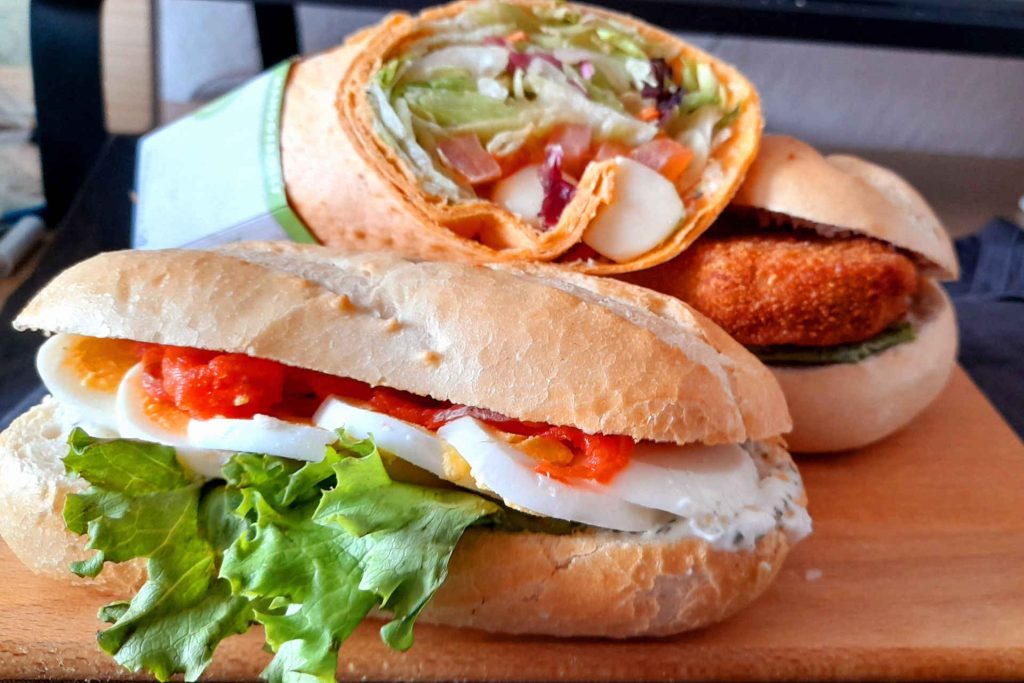
“Back to the Bite” tells the stories behind the flavors – authentic, surprising, and always with an eye on the present. Iconic dishes, forgotten classics, and culinary legends, this time in focus: the hoagie.
Hardly any other sandwich is as deeply rooted in everyday American culture as the hoagie. Crispy on the outside, soft on the inside, filled with a generous portion of meat, cheese, salad, and dressing – a true classic of deli culture. But what is now sold on every corner of the US East Coast once had very humble beginnings: at a shipyard in Philadelphia.
The term “hoagie” can be traced back to workers at the Hog Island Shipyard in Philadelphia, who brought long rolls with cold cuts, cheese, and vegetables to work with them in the early 20th century. The “Hog Island Sandwiches” became “Hoggies” in dialect and later Hoagies. The first written references can be found around 1928, particularly in connection with Italian-born deli operators in Philadelphia.
The classic hoagie consists of:
What makes it special is that it is not toasted but served cold – unlike its warm cousin, the sub or grinder.
Especially in Philadelphia and the wider Pennsylvania area, the hoagie is still considered a culinary treasure – in 1992, it was even named the official sandwich of the city of Philadelphia. It also has cult status in parts of New Jersey, Delaware, and Maryland.
Depending on the region, the hoagie is also known as:
Each name stands for a regional interpretation – sometimes with fish, sometimes with fried chicken, sometimes vegetarian. But the basic idea remains the same: a portable, hearty meal with character.
Today, the hoagie is experiencing a minor revival – as a gourmet version with homemade sauces, as a veggie hoagie with grilled vegetables and mozzarella, or as a fusion variation with Korean bulgogi or vegan cold cuts. Many American cities are seeing the emergence of new sandwich spots that take the classic and give it a modern twist.
Hoagie Day is celebrated every year as part of the Wawa Welcome America festivities in Philadelphia – a whole day in honor of the iconic sandwich.
The US company Prime Roots proves that the hoagie will still be relevant in 2025. Instead of sausage and ham, they use plant-based delicacies made from koji, which are remarkably similar in taste and texture to classic deli fillings – just without the meat.
Plant-based hoagies are now on the menu at over 80 New York delis – a sign that even traditional classics have a place in modern food culture.

Imola is much more than just a race track: the city combines top-class cuisine, cultural monuments, and traditional producers to create an experience that delights connoisseurs, Italy fans, and curious travelers alike. From 2-star gastronomy at Ristorante San Domenico to creative pizza experiences and slow food osterie to historic libraries, palazzi, and award-winning wineries: this guide shows you the best places for cuisine, culture, and shopping—authentic, high-quality, and with real added value for your next visit to Imola.
The two-star Berlin restaurant Horváth returns to Vienna in early 2026 with an exclusive pop-up, presenting an uncompromising new menu based on “emancipated vegetable cuisine.” For two weeks, Sebastian and Jeannine Frank’s team will take over the Herzig restaurant and serve a 7-course menu that shows how innovative, precise, and luxurious vegetables can be today. A culinary highlight for foodies, fine dining fans, and anyone who doesn’t want to miss Austria’s most exciting pop-up experience of 2026.
This time, Sebastian Frank is taking an even more uncompromising approach, with a new menu and a clear message: vegetables can be luxurious – even without caviar.
With the opening of its new distillery in Mosbach, Aromahopping is sending a strong signal about the future of artisanal spirits. Between extraordinary gin compositions, creative tastings, and a high-caliber supporting program, it became clear what makes the Odenwald brand so special: attention to detail, curiosity about new flavors, and a passion for honest craftsmanship.


“Back to the Bite” tells the stories behind the flavors – authentic, surprising, and always with an eye on the present. Iconic dishes, forgotten classics, and culinary legends, this time in focus: the hoagie.